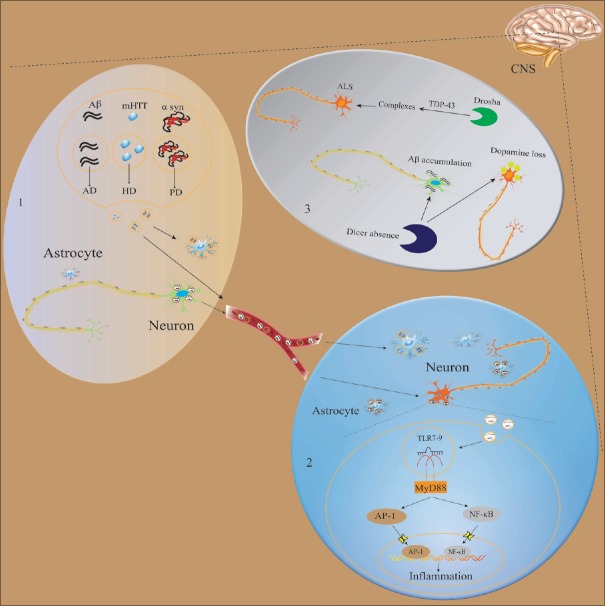Figure 3.
Exosomes and miRNA regulatory network in neurodegenerative diseases. (1) Aberrant aggregation of Aβ, α-syn, and mHTT in neurons is the primary cause of AD, PD, and HD. Neurons and neuroglial cells can release exosomes into the extracellular space or transport them to the neighboring cells through blood. (2) Exosomes contain miRNA. After the exosomes fuse with the membrane and release miRNAs into the intracellular plasm, TLRs are activated. TLR7-9 activates the myeloid differentiation factors (MyD88) and then activates nuclear factors nuclear factor-kappa B and transcription factors activator protein-1, leading to neuroinflammation and neuronal death. (3) miRNA formation disorder is closely associated with neurodegenerative diseases. Deficiency of Dicer is related to the accumulation of Aβ and reduction of dopamine. In ALS patients, the mutated TDP-43 forms a complex with heterogeneous nuclear ribonucleoproteins family proteins and Drosha, implying that Drosha is an essential enzyme for the formation of miRNA. Aβ: Amyloid-β peptide; α-syn: α-synuclein; mHTT: Mutated Huntingtin; AD: Alzheimer's disease; PD: Parkinson's; HD: Huntington's disease; TLR: Toll-like receptor; ALS: Amyotrophic lateral sclerosis; TDP-43: TAR DNA-binding protein 43; miRNAs: microRNAs.

